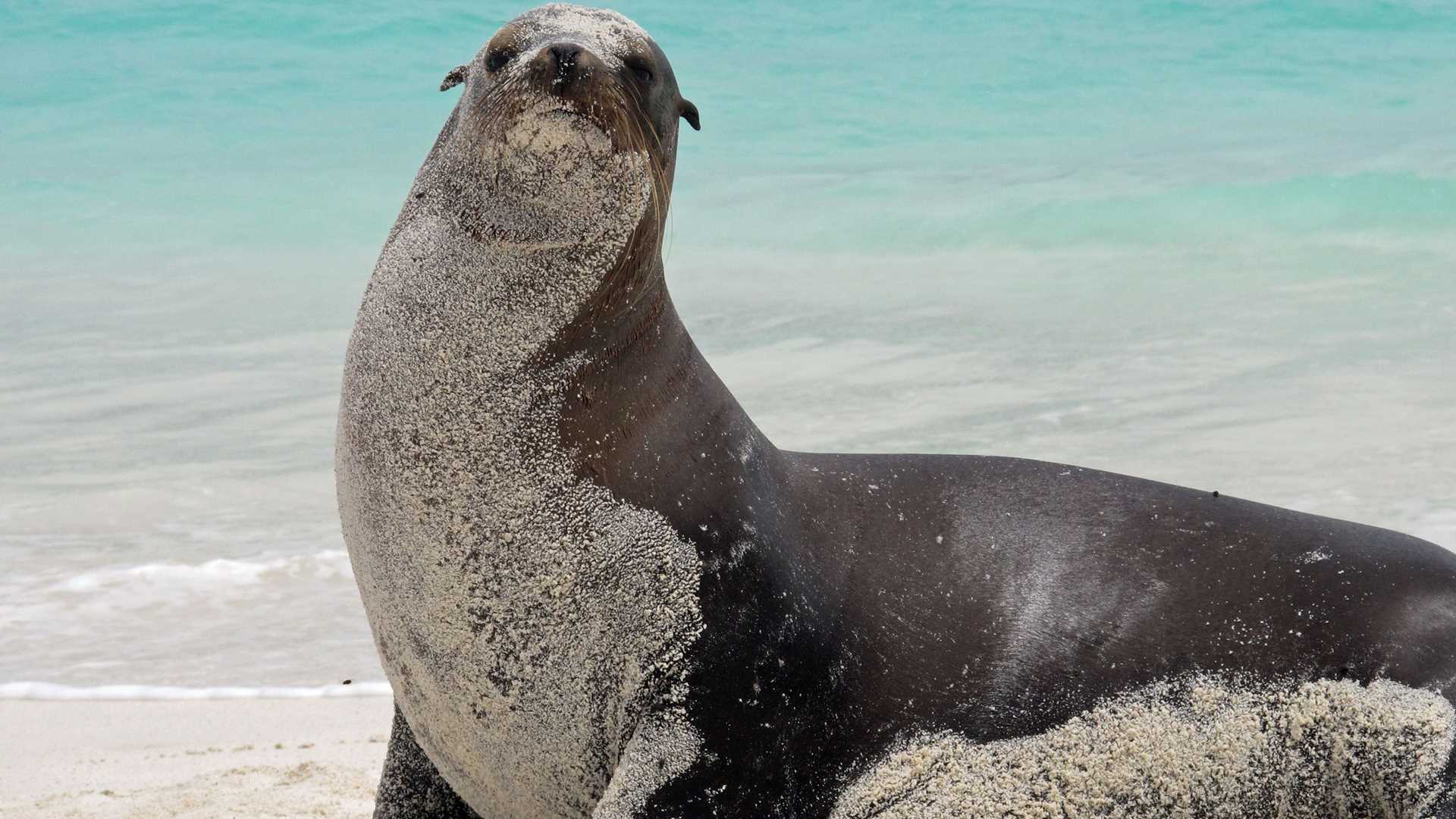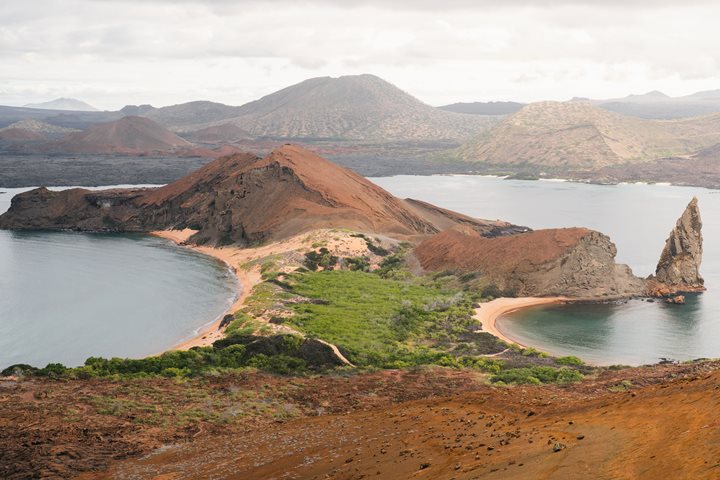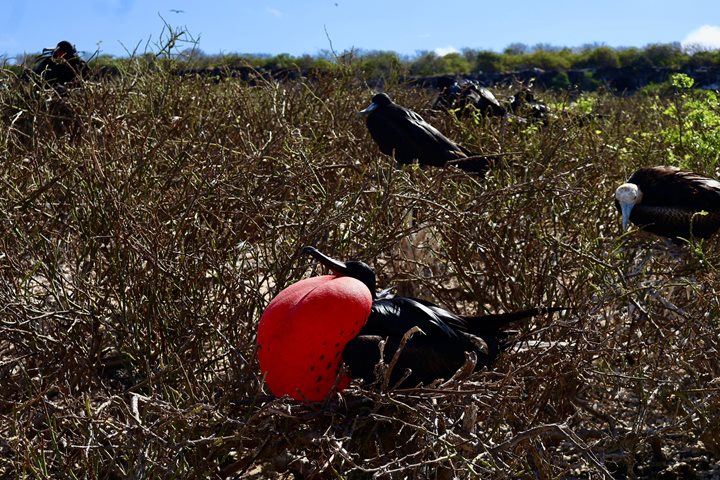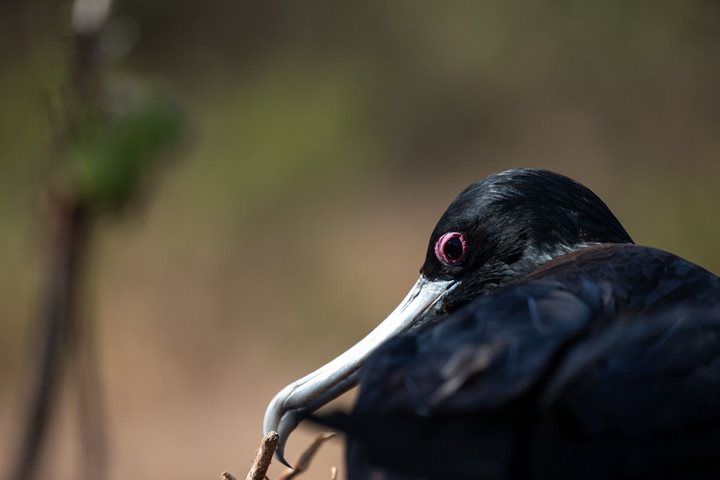The Galápagos Archipelago consists of approximately 13 larger islands, with the youngest located in the west and the oldest toward the east. Those eastern islands show a higher rate of endemism, as creatures have a longer span of time to evolve into new forms, which can only be found here. Today we visited Española, the easternmost of the Enchanted Isles, which is also the home to the only tropical albatross in the world: the waved albatross. With its amazing wildlife and stunning landscapes, there is no better way to start our expedition in the Galápagos!
- Daily Expedition Reports
- 14 Nov 2021
Española Island , 11/14/2021, National Geographic Endeavour II
- Aboard the National Geographic Endeavour II
- Galápagos
Gaby Bohorquez, Naturalist
Gaby was born and raised in Guayaquil, Ecuador. Her first job in the Galapagos was on board a 90-passenger cruise ship as the cruise director’s assistant, and she fell under the spell of the Enchanted Isles. She returned to Guayaquil to study at the ...
Read MoreShare Report
Exploring Galápagos
VIEW ITINERARYRelated Reports
6/13/2025
Read
National Geographic Endeavour II
Genovesa Island
We started the day with excitement as we landed on the beautiful, pristine coast of Isla Genovesa - a true birder’s dream. Along the sandy beaches and steep cliffs of Darwin Bay, we were surrounded by an incredible array of birdlife. Frigatebirds soared closely overhead with their red pouches on full display, while Nazca and blue-footed boobies nested along the rocky ledges. Swallow-tailed gulls called out as we walked past. In the distance, we saw the stoic and elusive short-eared owl. The island was alive with color, sound, and constant movement. Between our excursions to Isla Genovesa, we snorkeled near Prince Philip’s Steps and discovered a vibrant world beneath the waves. Schools of fish swirled around us, a fur seal turned in the water as if dancing on cue, and sea lions relaxed nearby. As our last snorkeling adventure came to a close, we spotted a sea turtle resting calmly in a crevice. As the sun retreated into the sky on our last return to National Geographic Endeavor II, we reflected on the sheer magnitude of what we witnessed on our last full day. Isla Genovesa, like the other islands, gave us a connection to a sacred world. The harmony between land, sea, and sky reminded us how deeply interconnected, vital, and fragile these ecosystems are. Watching birds tend to their nests and marine life swim effortlessly, we were struck by how little space there is between wonder and reverence. We recognized that our journey wasn’t just about observing unique wildlife, it was about feeling part of something grander and beautifully ancient.
6/12/2025
Read
National Geographic Gemini
Genovesa Island
Sadly, our expedition aboard National Geographic Gemini is nearing its end. Our day began with a hike at the base of towering cliffs. A steep ascent led us to a plateau of a palo santo forest, sparse and otherworldly. Almost immediately, we were surrounded by red-footed boobies nesting in low trees and Nazca boobies on the ground. A highlight was spotting a short-eared owl perched silently among a lava crevice, camouflaged and hunting storm petrels. The calls of frigatebirds rang in the air, with their inflated red pouches on full display in a mating show. After our hike we enjoyed water activities, such as kayaking along the cliffs and snorkeling. In the late afternoon, we landed on the coral sand beach of Darwin Bay. Guests enjoyed a relaxing stroll along the shoreline bordered by mangroves and nesting bird colonies. The presence of swallow-tailed gulls, lava herons, and marine iguanas provided excellent photo opportunities.







